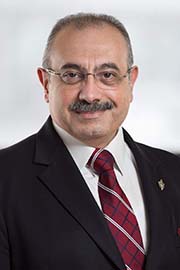- Jun/5/23 2:30:00 p.m.
- Re: Bill 102
It’s an honour to rise in the House to speak on behalf of my community in Toronto Centre. Specifically, today we’re discussing the government’s Bill 102, Strengthening Safety and Modernizing Justice Act. There are some parts of the bill that are supportable, and I’d be happy to speak about these parts, but I do find that there are other parts of the bill that are very concerning, and so I’m glad that the government is here today to listen to those concerns, as well.
We know that the safest communities are not the most policed communities; they are the ones with the most resources. Much of crime is committed by people in desperate situations today, and they could be prevented. Obviously, we want to be able to get to a place where we have zero crime. Poverty creates crime. Addiction, without supports and treatment, can create crime. Loneliness, disconnection and a lack of community cohesion create crime. Police officers are dealing with the most downstream effects of these issues. We would not need so many police officers if we were not pursuing this lack of new recruits today as hard as we were, if the government actually stepped up and actually invested in communities to mitigate crime. It is proven—studying upstream avenues and solutions there is how we keep communities safe. Affordable housing is crime prevention. After-school programs are crime prevention. Doubling ODSP and OW is crime prevention. Funding addiction treatment beds is crime prevention. Anti-racism and gender-equity policies are crime prevention. Properly funding and resourcing our public schools is crime prevention. Increasing the minimum wage is crime prevention. I could go on; the list is actually endless, but the thesis here is exactly the same: When people have economic opportunity and social resources, they can live well and be part of the community. That’s when crime is prevented.
Affordable and, yes, government-subsidized housing is a cornerstone of happy, healthy, thriving communities. Just ask the neighbours. In my community, I speak to BIA members, and we are talking to mental health workers, we are speaking to street-involved people here in Toronto Centre, and they all absolutely agree—it’s a consensus—that mental health and addictions resources and actual affordable housing mean that we will have safer streets and that communities will then welcome everybody.
Every time I meet with a business improvement area, the number one issue that they bring up is community safety, but unlike the government, they are proposing a different solution. They are proposing supportive housing, deeply affordable housing. It’s not a radical idea. It’s coming from the business leaders in my community, and I’m hearing it from them more and more. Even more than the activists and even more than service providers, it’s the business community in this case, in Toronto Centre and the downtown financial district, that is actually leading that conversation by saying that the government needs to get back into the business of building deeply affordable, government-subsidized housing.
The government loves to tout itself as being supportive of police, and I would ask them to take a look at their policies a little bit closer. Many choices they have made over the last five years have actually eroded public services and the social safety net. Their lack of investments has made the jobs of police officers more difficult—it’s now more complex, and essentially it has made more work for the officers. The police should be the last resort. You should not have to call them when someone is homeless. You should not have to call them when someone is having a mental health disorder. When upstream services are eroded, the layers of help between the first line of assistance and the police get thinner and thinner, meaning that more calls fall to the police. This is bad for communities because issues escalate and become crisis situations more frequently. It is also bad for the police because they’re run off their feet, jumping from crisis to crisis, when they may not even be equipped to deal with a problem they’re faced with.
One of the programs that I’m most proud to speak about from my time at Toronto city council was the Toronto Community Crisis Service. This was a pilot project that I helped champion during my time at city council. It was introduced to four areas in the city. The downtown east pilot project covers almost all of my riding of Toronto Centre. It was done in partnership with the Gerstein Crisis Centre and other local organizations. We were able to successfully divert 78% of the 1,530 calls that we received from 911 with zero police involvement. The TCCS, as we call it, received a total of 2,489 calls for service from 911, as well as 211, and it was directly connected to community anchor partners. Out of those calls, 84% resulted in mobile teams being dispatched. Programs like this are a win-win solution. Our biggest champions are Toronto police themselves, who understand that they are not mental health workers; they understand that they are not social workers. When we’re able to divert those calls to the organizations and service providers that can actually provide supports, the police are then freed up to do real policing work, and they are more trained to handle those very complicated and violent situations.
This is why we need to have non-police options when a non-violent crisis occurs. If someone is in crisis and can benefit from the TCCS team and there’s a weapon, then we call the police, and then the TCCS will work with the police to go and be dispatched together. That’s how effective community safety works.
I have heard from constituents who have been overjoyed with how the TCCS team has assisted community members in crisis with compassion and professionalism. My constituent Chris emailed me to tell me about a situation he witnessed several months ago, right here on Parliament Street in Toronto Centre. There was a community member who was in crisis, yelling and approaching other pedestrians on the street outside of a grocery store. Shoppers were understandably distressed and concerned for the individual. Chris, who was on the other side of the street on a patio, saw the Toronto Community Crisis Service team approach the individual, provide compassionate support to de-escalate him and connect him with community resources to support him. Chris told me that he was blown away by how professional, how kind and how respectful the TCCS team was, and that they were able to help this person in crisis and that everybody was able to see community action in effect. He says that the compassionate community response to mental health crisis is what we should be amplifying and expanding in the city of Toronto, and I couldn’t be more agreeable.
I would even put forth that this government could actually take the model that we’ve developed right here in Toronto and export that to other urban centres to ensure that those communities are just as supported as we are. This pilot project is not as well funded as it can be, but certainly, with the right resources, you can scale it up.
I would love to see such a program expanded to answer the school discipline calls, as well. The presence of police during a disciplinary action can be stressful for many students, especially racialized ones. It would be great if all involved when a student is in crisis had access to outside mental health professionals who could assess the situation and provide options in a non-judgmental way that help us de-escalate the situation. Not every conflict has to lead to arrest. In all but a few outlier situations, a child in crisis needs support and strategies, not law enforcement.
That being said, I want to talk about another area where policing has worked incredibly well in my communities—I continually get positive feedback from constituents of many backgrounds—and that is in dedicated neighbourhood community policing models. Through community policing, four neighbourhoods in my riding have originally received neighbourhood community officers: Regent Park, Moss Park, Church and Wellesley, and North St. James Town. After years of advocating for neighbourhood community officers—and I was at the forefront of pushing forward a model of reformed community policing—in my riding of Toronto Centre, every single one of my neighbourhoods now is covered by neighbourhood community officers.
Interjections.
- Hear!
- Rabble!
- Jun/5/23 3:30:00 p.m.
- Re: Bill 102
You know what? I want to continue on that theme. I want to thank the member from Toronto Centre for her remarks today. You mentioned the social determinants of safety. Statistics show that in societies where you have a lesser gap between rich and poor, you have lower levels of crime; you have lower homicide rates. Part of it is really obvious.
Under this government, we’ve got an opioid crisis, an epidemic that is exploding. We’ve got a homelessness epidemic that is exploding. We’ve got food bank lines that are around the block. The statistics show that 80% of homeless youth are victims of at least two crimes per year; 32% reported being victims of sexual assault. So when this government refuses to address those social determinants of safety, they’re actually increasing the amount of work that the police have to do.
What would you recommend to this government, and how would you change this bill to address the social determinants of safety?
- Hear!
- Rabble!
- Jun/5/23 3:50:00 p.m.
- Re: Bill 102
I really am very delighted to discuss and support this bill. Why are we looking to the Strengthening Safety and Modernizing Justice Act? Because we have some issues; we need to address them.
The problem is, crime is on the rise. Since 2014, crime rates in Ontario have risen by 9%. Violent crime rates have risen by 20%. According to data from Peel police, this May there were 304 reported cases of vehicle theft in Mississauga. On average, there have been 12 vehicle thefts per day in Mississauga this year. Less than 2% of those have been solved.
Violence against workers doing their job is on the rise: public transit—we see what’s going on with the TTC—nurses, some violence in hospitals, pharmacy robberies. Every day, I get one of the pharmacists calling me in regard to a pharmacy robbery.
Police officers we lose—I think this is the highest rate maybe in decades, maybe ever; I’m not sure. I don’t have any other statistics—older ones to compare. On average, we are losing one officer almost every month. This is a very high rate of violence. Over the past year, we have seen a tragic number of police officers die in the line of duty.
Violence in schools is on the rise. Schools should be a place for learning and community, not violence. The Minister of Education announced in April that the government is investing $24 million to reduce the risk of violence and promote the safety of students and educators.
We did a motion calling for the federal government to implement bail reform. Earlier this year, the House passed an address calling on the federal government to implement meaningful bail reform. Finally, the government agreed, this May, to start the process of bail reform. We must continue working with the federal government to ensure repeat violent offenders stay off the streets.
This bill will allow meaningful changes to address Ontario’s crime problem. We are implementing the 2019 Community Safety and Policing Act. This new legislation will replace the Police Services Act with a robust framework to advance safety, transparency and effectiveness of the community safety system. Amendments to oversight and governance and labour arbitration provisions will improve accountability for the police sector.
Clearing the backlog in the justice system: Slow justice is injustice; I always say that—if it takes years to get my right, this is injustice as well. So ensuring that claims are heard in the court of appropriate jurisdiction—low-volume claims should be held in Small Claims Court. The bill frees up time and resources for the Superior Court of Justice to address bigger cases.
Improving emergency services such as by implementing next-generation 911: Last year, Ontario announced a $208-million investment towards 911 emergency response system improvements which will make the system faster, more responsive and more efficient. With this bill—some parts of it will allow some information-sharing, which will allow the police to act in a better way in creating co-operation between different areas of the police.
Training judges and justices to address gender-based violence: Again, the new judges need some training. This is similar to recent bipartisan federal legislation to provide training on sexual assault. That’s one item, but our government has gone even further. We need to do training about intimate partner violence and coercive control in intimate partner and family relationships.
Social context, which includes systematic racism and systematic discrimination: The Chief Justice is now required to submit a report to the Attorney General on these topics. We need to monitor the improvement of this area.
Ontario’s government is keeping people safe and secure. We need to work together. Again, the approach of any defunding of police or talking about stopping police violence—this is demoralizing our police forces. Those front-line officers work shifts, nights, weekends to make sure that we are safe. If I am a police officer and I hear this “defund the police” talk—it’s rhetoric, and it’s actually demoralizing police. It doesn’t even get them enthusiastic to do a good job because they don’t feel that anybody feels that they are doing good job. But they are doing a good job.
Another approach of that is—we need to promote neighbourhood watch. We need to get lots more information sources to the police to help them, because they can’t be everywhere every time. As much as they have resources, as much as we put resources, there are still going to be gaps. We need to take the approach that public safety is everybody’s responsibility—not only the police, not only the firemen.
Again, I have to emphasize that when somebody is looking for a house, searching for a house or preparing to get a house, they check the areas, and they seek to have a home in a safe neighbourhood. Business cannot act, cannot grow and cannot prosper when they, all the time, have holdups and guns pointing—and losing their revenues and losing their workers to mental issues or shock issues after an attack. They lose their workers because they can’t function anymore because of the stress of what happened. If, God forbid, something happened—we lost one of the workers—the whole team gets really in a bad shape. Business cannot act and cannot grow unless there is a good safety environment to be able to function and do business.
We hear that some gas stations start closing at an early time of the evening because they don’t want to have anybody inside the gas station overnight, because they cannot guarantee safety. This is alarming.
We need all of us to work together. Maybe this bill only is not the answer. We need more bills. We need to strengthen and modernize our ways of conducting police business to protect the people. We cannot allow the gangs—technology-wise and training-wise—to be beyond the police’s capabilities or more advanced than the police. The police have to be on top of everything.
Yesterday, I heard that a friend of mine’s car got stolen. He asked some people, and they said that a reader that can decrypt the key’s encryption is sold on Amazon for $100. That’s scary. We need to be ready for these kinds of activities.
We need to make sure that legislation is up to speed so we can protect properties, protect businesses, protect the life and safety of Ontarians.
Again, we are providing those at the forefront of community safety with the legislative and administrative support they need to deliver the highest-quality services to the province.
I refuse and reject any talk about violence of the police and defunding police.
- Hear!
- Rabble!




